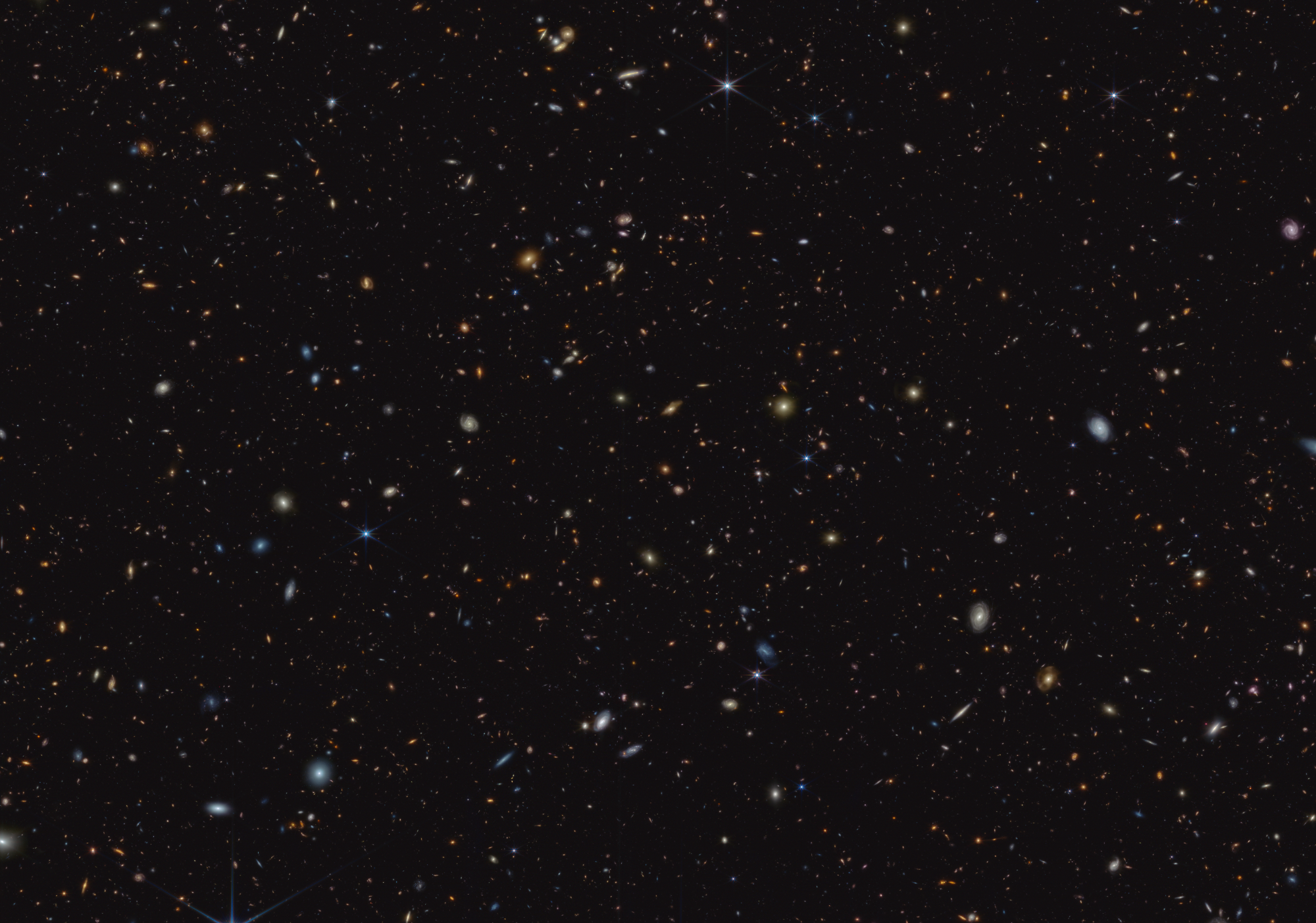Star formation in early universe much more complicated than thought

The James Webb Space Telescope (JWST), the world's most powerful space science observatory, has started providing new insights into the origins of the first stars and galaxies in our universe.
Among the pioneering initiatives undertaken by the JWST in its first year of scientific operations is the JWST Advanced Deep Extragalactic Survey (JADES), an ambitious program which will dedicate approximately 32 days of precious telescope time to explore and characterize faint, distant galaxies.
In a short span of time, JADES has discovered hundreds of galaxies that thrived when the universe was a mere 600 million years old or younger. Moreover, the JADES team has also identified galaxies pulsating with the brilliance of numerous young, hot stars, signifying vibrant stellar nurseries.
Ryan Endsley from the University of Texas at Austin led an investigation into galaxies that emerged between 500 and 850 million years after the monumental event known as the big bang. According to the researchers, during the first few hundred million years following the big bang, the universe was shrouded in a dense gaseous fog that rendered it opaque to energetic light. However, by around one billion years after the big bang, the fog dissipated, and the universe became transparent again - a phenomenon called reionization. Scientists have long debated whether active supermassive black holes or galaxies brimming with young, scorching stars were the primary cause of reionization.
Endsley and his team scrutinized these ancient galaxies using Webb's Near-Infrared Spectrograph (NIRSpec) to search for telltale signs of star formation, and they were found in abundance. These luminous, massive stars emitted copious amounts of ultraviolet (UV) light, causing the surrounding gas to transition from opaque to transparent by ionizing the atoms, separating electrons from their nuclei. Given the prevalence of these hot, massive stars in early galaxies, they may have played a pivotal role in driving the reionization process.
The team also discovered evidence suggesting that these youthful galaxies underwent cycles of rapid star formation interspersed with quieter periods when fewer stars were born. This fluctuating pattern might have occurred as galaxies captured clumps of gaseous raw materials required for star formation. Alternatively, the researchers believe that rapid explosions of massive stars may have intermittently injected energy into the surrounding environment, preventing gas from condensing and forming new stars.
Another captivating aspect of the JADES program involves the search for the earliest galaxies that existed when the universe was less than 400 million years old. By studying these ancient galaxies, astronomers can explore how star formation during the early post-big bang era differed from the processes observed in the present universe.
The light from galaxies located far across the cosmos is stretched to longer wavelengths and redder colors due to the expansion of the universe - a phenomenon known as redshift. Astronomers can determine the distance and age of a galaxy in the early universe by analyzing its redshift. Prior to the launch of the Webb telescope, only a small number of galaxies with a redshift above 8 were observed, corresponding to a time when the universe was less than 650 million years old. However, the JADES project has now discovered nearly a thousand galaxies at these extremely remote distances.
Kevin Hainline and his colleagues from the University of Arizona in Tucson utilized Webb's NIRCam (Near-Infrared Camera) instrument to acquire these measurements, known as photometric redshifts. They identified over 700 potential galaxies that existed when the universe was between 370 million and 650 million years old. The abundance of these galaxies surpassed expectations based on observations conducted prior to the Webb telescope's launch.
"We’re finding star formation in the early universe is much more complicated than we thought," said Marcia Rieke of the University of Arizona in Tucson, co-lead of the JADES program.
You're looking at 45,000+ galaxies.This image was taken as part of the JWST Advanced Deep Extragalactic Survey (JADES) — a massive science program that’s revolutionizing what we know about galaxies in the early universe: https://t.co/5gqntO0C4SHere are the highlights ⬇️ pic.twitter.com/8VqYlmvtDK
— NASA Webb Telescope (@NASAWebb) June 5, 2023










